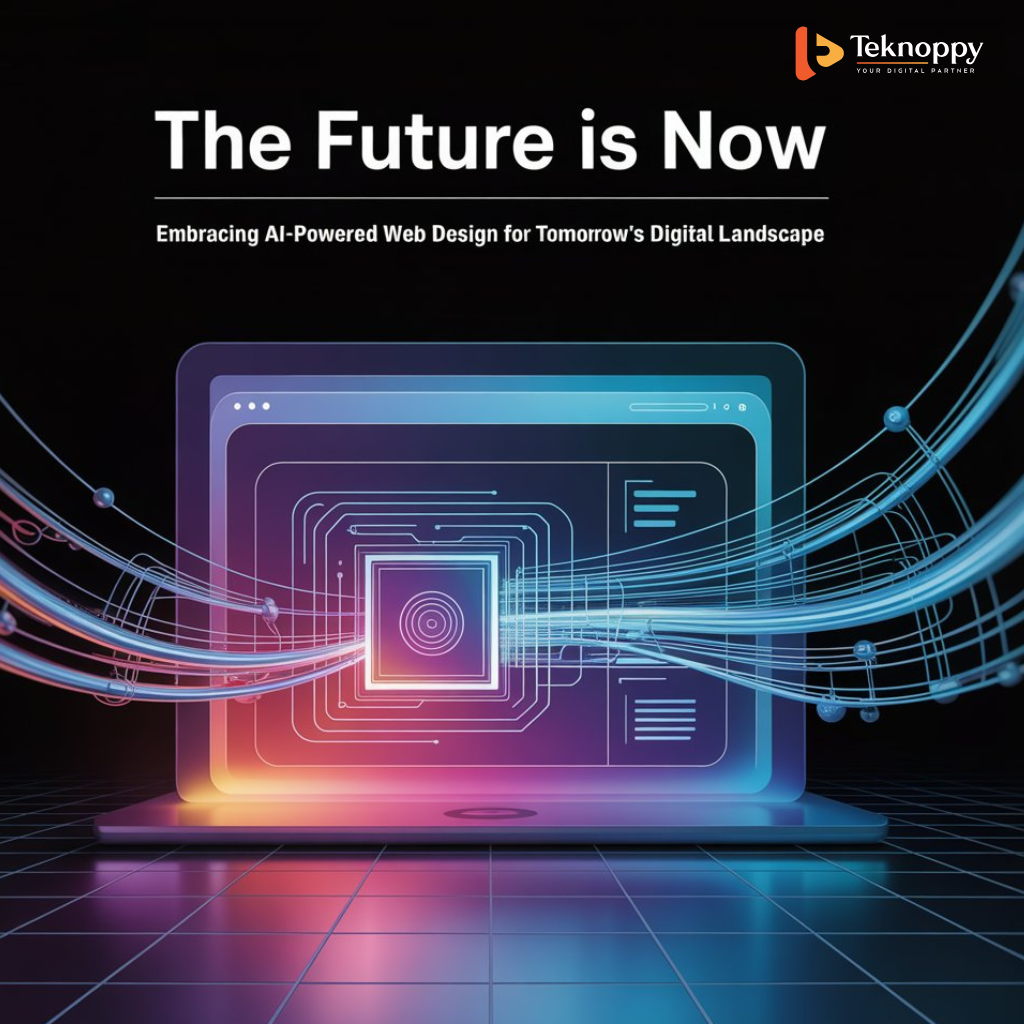zIn today’s rapidly evolving digital ecosystem, businesses that fail to adapt to emerging trends
risk falling behind their competitors. The convergence of artificial intelligence, user experience
innovation, and cutting-edge technology is reshaping how we approach AI-powered web design and
digital strategy. Organizations worldwide are discovering that staying ahead requires more than
just following current trends—it demands a future-focused mindset that anticipates tomorrow’s
digital demands.
Revolutionary Technologies Transforming Digital
Experiences
The landscape of web development has undergone a dramatic transformation in recent years.
Modern websites are no longer static presentations but dynamic, intelligent platforms that adapt
to user behavior in real-time. This evolution represents a fundamental shift from traditional
design approaches to sophisticated systems that learn, adapt, and optimize continuously.
Machine learning algorithms now power personalization engines that deliver unique experiences
to each visitor. These systems analyze user behavior patterns, preferences, and interaction data
to create tailored content recommendations and interface modifications. The result is a more
engaging, relevant experience that drives higher conversion rates and user satisfaction.
Voice interfaces and conversational AI have also emerged as game-changing technologies.
Users increasingly expect websites to respond to natural language queries and provide instant,
accurate responses. This shift toward conversational interfaces requires designers and
developers to think beyond traditional navigation structures and embrace more intuitive
interaction models.
Emerging Design Trends Shaping the Future
Contemporary web design is embracing several key trends that will define the digital landscape
for years to come. Minimalist aesthetics continue to gain traction, with clean lines, generous
whitespace, and focused content hierarchies creating more digestible user experiences. This
approach aligns with users’ preference for fast-loading, easily navigable websites.
Dark mode designs have transitioned from novelty to necessity, with users increasingly
demanding this option across all digital platforms. Beyond aesthetic appeal, dark interfaces
reduce eye strain and extend battery life on mobile devices, making them both trendy and
practical.
Micro-interactions and subtle animations are becoming sophisticated storytelling tools. These
small details create emotional connections between users and brands while providing valuable
feedback about user actions. When implemented thoughtfully, they enhance usability without
overwhelming the core content.
Sustainable design practices are gaining momentum as environmental consciousness
influences digital strategy. Optimized code, efficient hosting solutions, and streamlined user
journeys reduce energy consumption while improving performance metrics.
The Power of Intelligent Automation in Modern Web
Development
AI-powered web design represents the next frontier in digital innovation. These intelligent
systems can analyze vast amounts of user data to make real-time design decisions, optimizing
layouts, content placement, and functionality based on individual user preferences and
behavioral patterns.
Automated testing and optimization tools are revolutionizing how we approach website
performance. These systems continuously monitor user interactions, identify friction points, and
suggest improvements without manual intervention. The result is websites that evolve and
improve automatically, delivering better experiences over time.
Predictive analytics enable websites to anticipate user needs before they’re explicitly expressed.
By analyzing historical data and current behavior patterns, intelligent systems can preload
relevant content, suggest next actions, and streamline user journeys in ways that feel almost
magical to end users.
Implementation Strategies for Forward-Thinking
Organizations
Successfully adopting future-focused design requires a strategic approach that balances
innovation with practicality. Organizations should begin by conducting thorough audits of their
current digital assets, identifying areas where emerging technologies could provide the greatest
impact.
Pilot programs offer an excellent way to test new technologies and design approaches without
committing entire budgets to unproven concepts. Start with small-scale implementations that
can be measured, refined, and scaled based on performance data and user feedback.
Cross-functional collaboration becomes critical when implementing advanced technologies.
Design teams, developers, data analysts, and marketing professionals must work together to
ensure new features align with business objectives and user expectations.
Training and skill development initiatives ensure teams remain current with evolving
technologies and design principles. Regular workshops, certification programs, and industry
conference participation help maintain competitive advantages in a rapidly changing landscape.
Measuring Success in the Digital Future
Key performance indicators for future-focused websites extend beyond traditional metrics like
page views and bounce rates. Modern success measurement includes user engagement depth,
personalization effectiveness, and adaptation speed to changing user preferences.
Real-time analytics dashboards provide immediate feedback on how new features and design
elements perform. These insights enable rapid iterations and improvements, ensuring websites
remain optimized for peak performance.
User satisfaction surveys and feedback collection mechanisms help validate whether
technological advances actually improve the user experience. Sometimes, the most
sophisticated features aren’t necessarily the most valuable to end users.
Building Tomorrow’s Digital Experiences Today
The future of web design belongs to organizations that embrace innovation while maintaining
focus on user needs and business objectives. By combining cutting-edge technology with
human-centered design principles, forward-thinking companies can create digital experiences
that not only meet current expectations but anticipate future demands.
Success in this evolving landscape requires continuous learning, experimentation, and
adaptation. The organizations that thrive will be those that view change as an opportunity rather
than a challenge, consistently pushing boundaries while delivering exceptional value to their
users.
Ready to Transform Your Digital Presence?
Don’t let your website become yesterday’s news. Partner with our expert team to implement AI-powered web design
future-focused design strategies that will keep your brand ahead of the competition.


 +91 6282249224
+91 6282249224